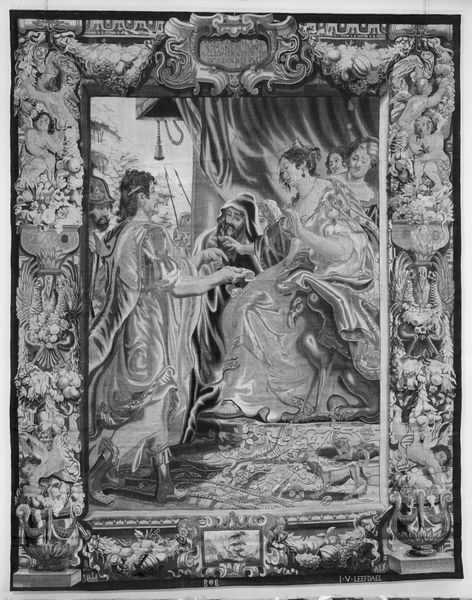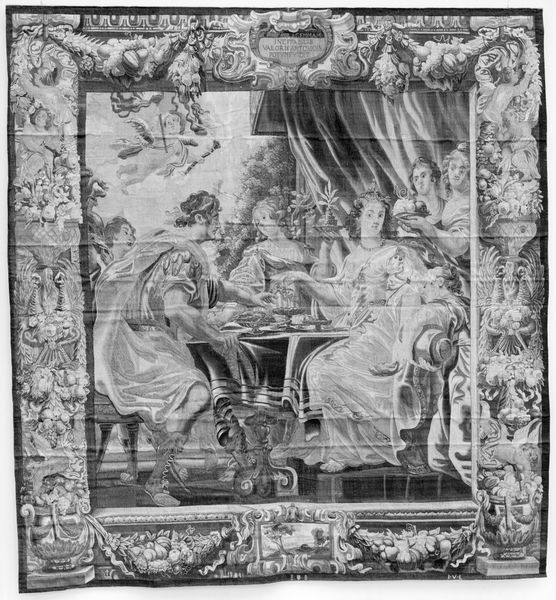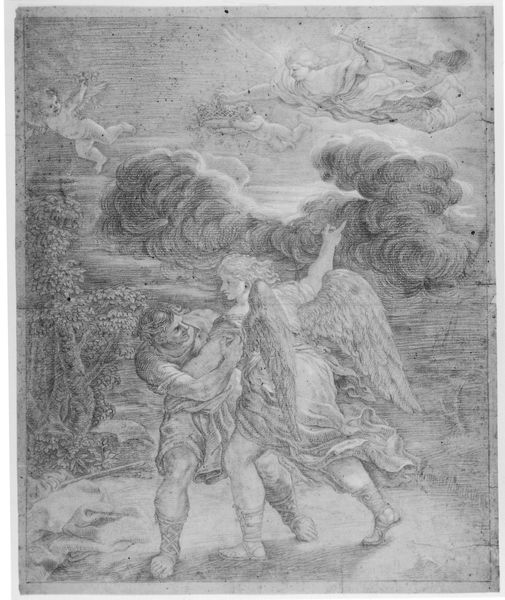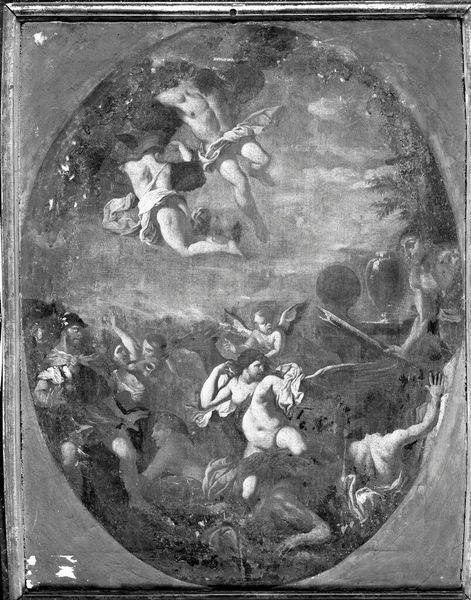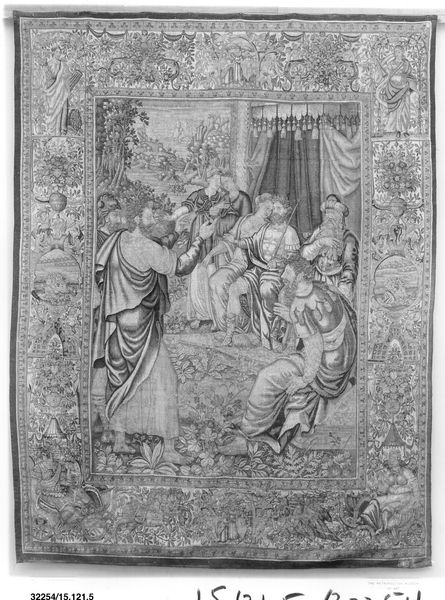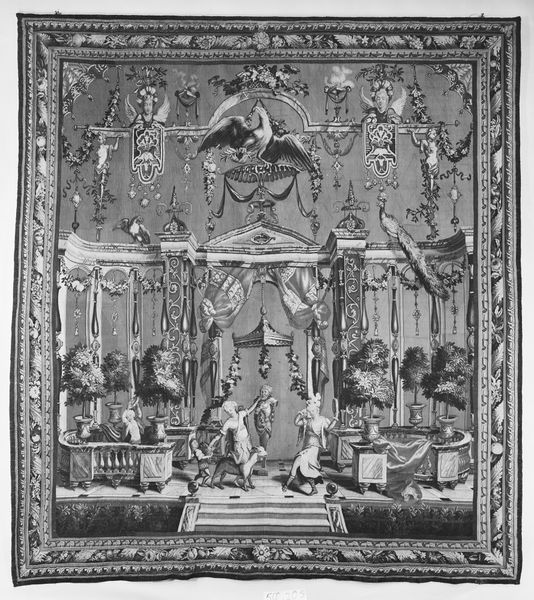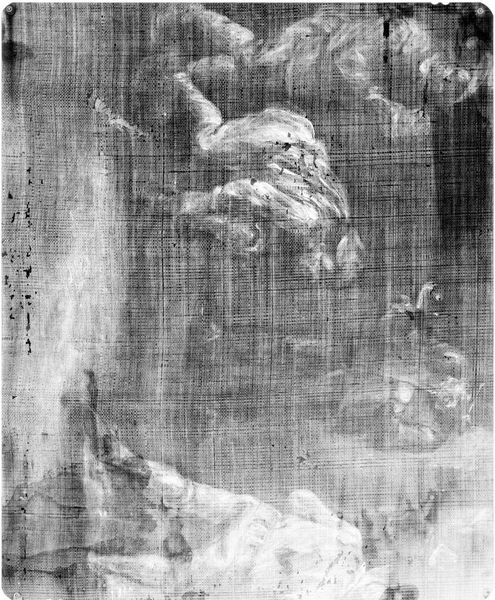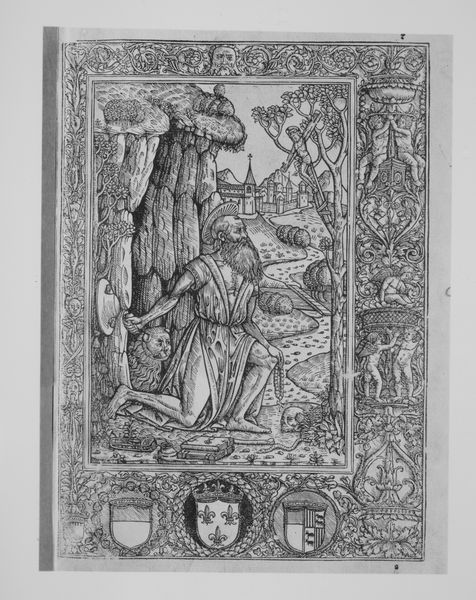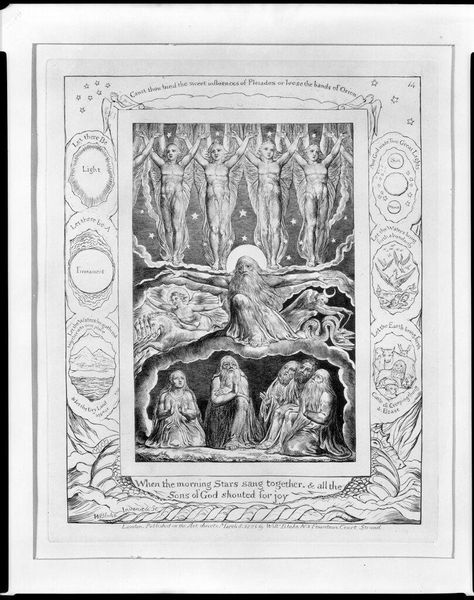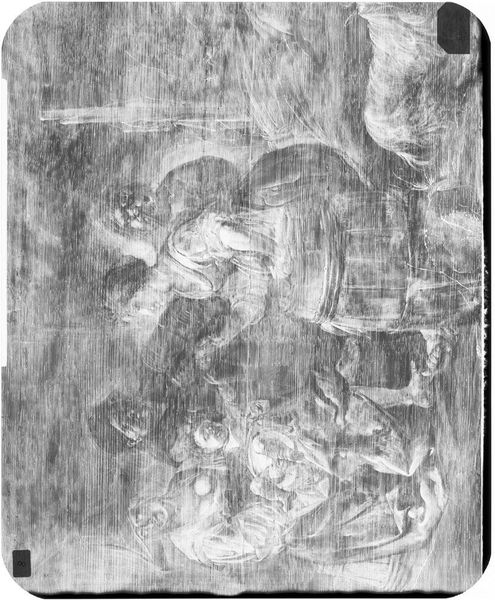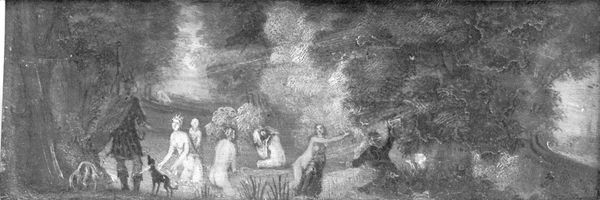
Design for the Fugger Chapel in Augsburg resurrection of Christ 1510
0:00
0:00
carving, photography, sculpture, wood
#
carving
#
stone
#
sculpture
#
figuration
#
11_renaissance
#
photography
#
jesus-christ
#
sculpture
#
wood
#
history-painting
#
northern-renaissance
#
statue
#
christ
Copyright: Public domain
Curator: This arresting artwork, circa 1510, is a photographic reproduction of Albrecht Dürer's design for the Fugger Chapel in Augsburg, specifically focusing on the "Resurrection of Christ." It showcases Dürer's Northern Renaissance sensibilities. Editor: Immediately, I'm struck by the dramatic dynamism. Even in this monochrome image, the energy practically vibrates off the stone—the chaotic tangle of bodies emerging from darkness into blinding light feels very charged. Curator: Absolutely. The visual vocabulary that Dürer employs speaks volumes. Light floods in, banishing ignorance, which is traditionally rendered through depictions of darkness. Note Christ’s position at the apex. This reinforces a pre-existing power structure. Editor: Precisely. That use of light—divine light breaking through earthly darkness. But whose earth are we talking about? Consider how the commission comes from the Fugger family, powerful merchants. Dürer's skill serves to sanctify their authority and place within the rising capitalist system of the time. Curator: A sharp point. However, his artistic decisions here are anchored in pre-existing traditions of religious imagery. The arrangement of figures, the resurrection theme, even the architectural details, point to cultural memory and continuity rather than radical innovation. He presents established symbolism to connect to the audience. Editor: Of course, religious symbols are never neutral. Take a closer look, we can dissect it as both a potent spiritual declaration *and* a declaration of worldly power in service of existing social hierarchies. After all, how is Christ represented, what class and cultural associations do those signify? And conversely, who isn’t being seen or represented here. Curator: A reminder that we cannot separate even what is meant to be the “sacred” from our human realities. Considering that Dürer has given us visual keys that unlock a cultural story and invite us to examine its nuances. Editor: Indeed. When seen through the lens of its socio-political implications, "Resurrection of Christ" transforms from a straightforward spiritual depiction into a compelling, challenging window into a complex era.
Comments
No comments
Be the first to comment and join the conversation on the ultimate creative platform.
